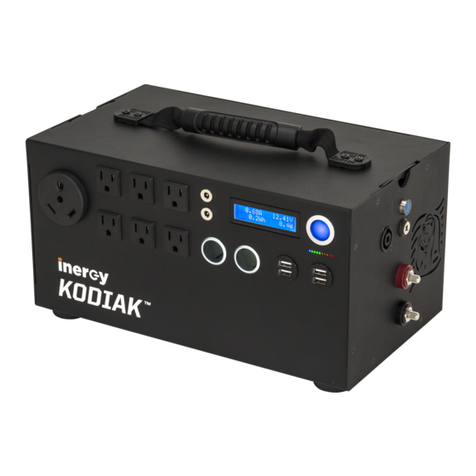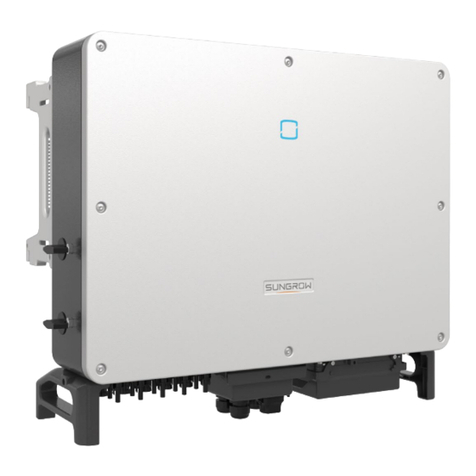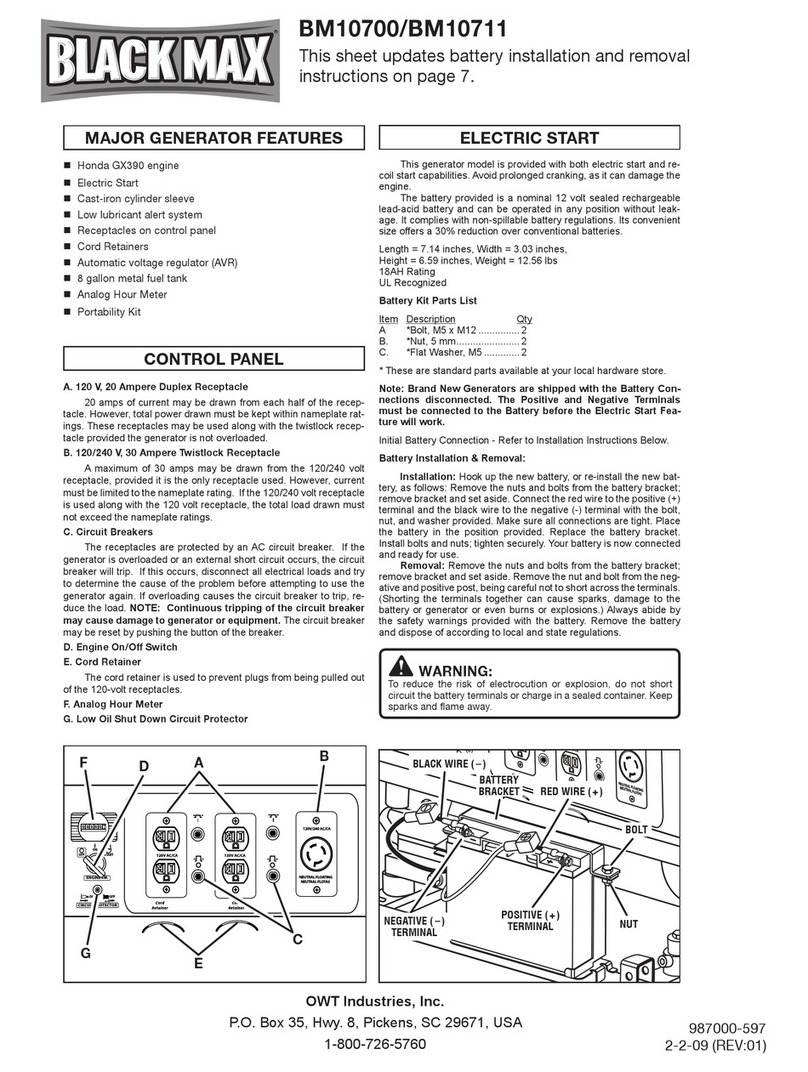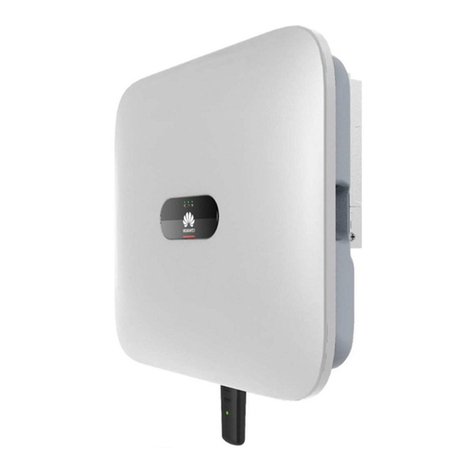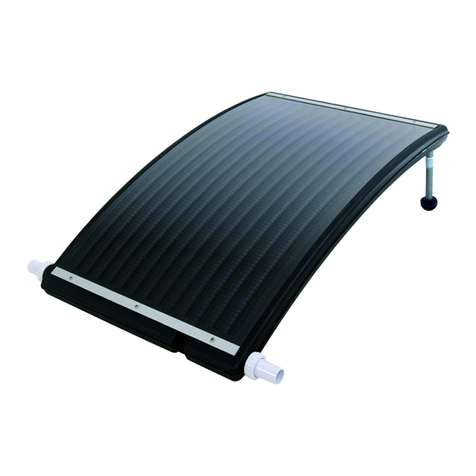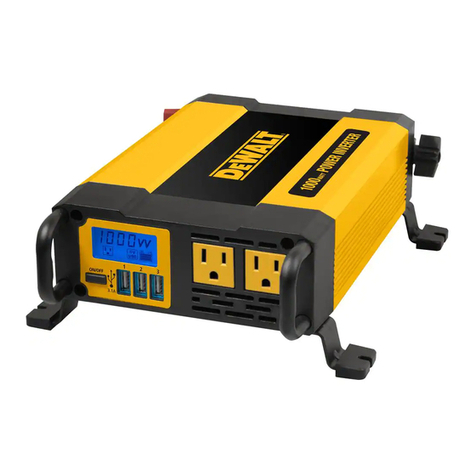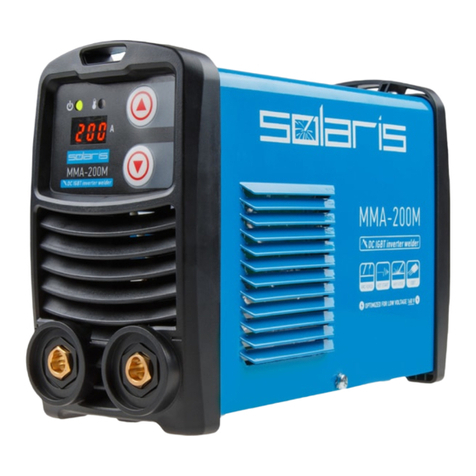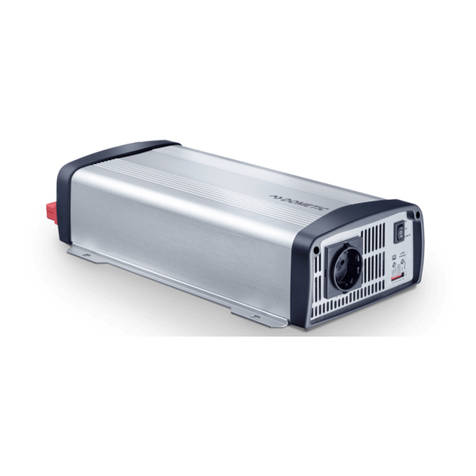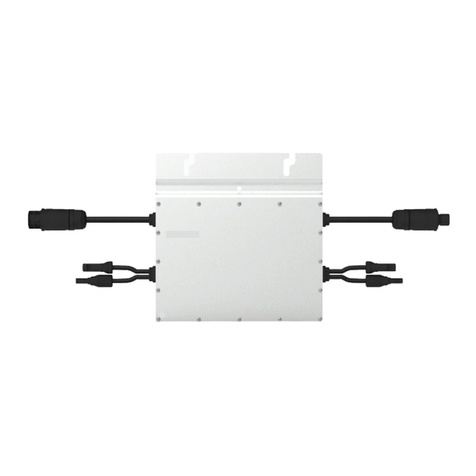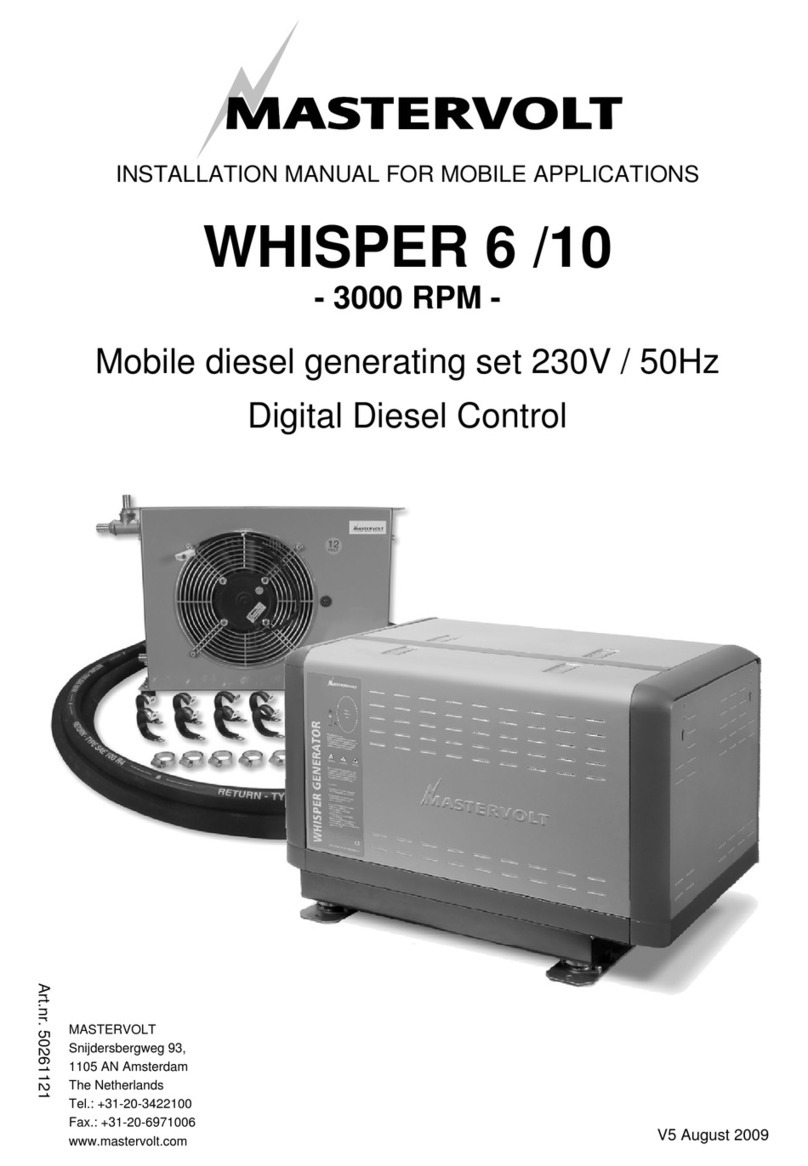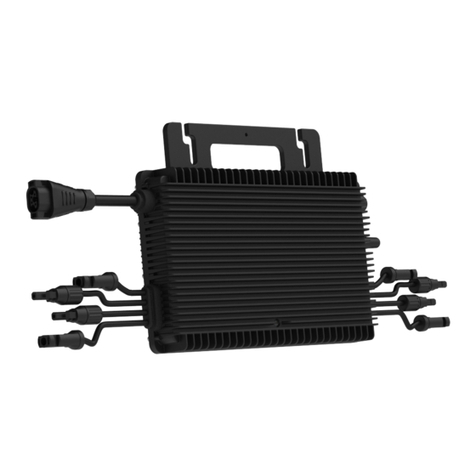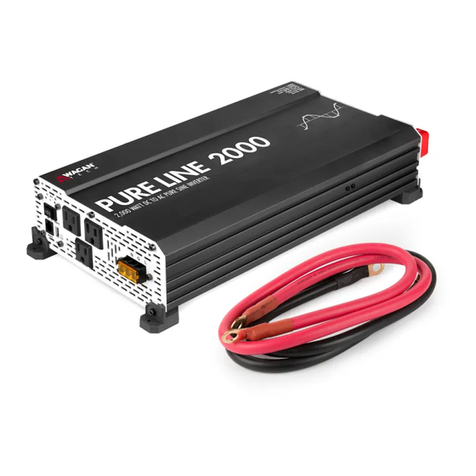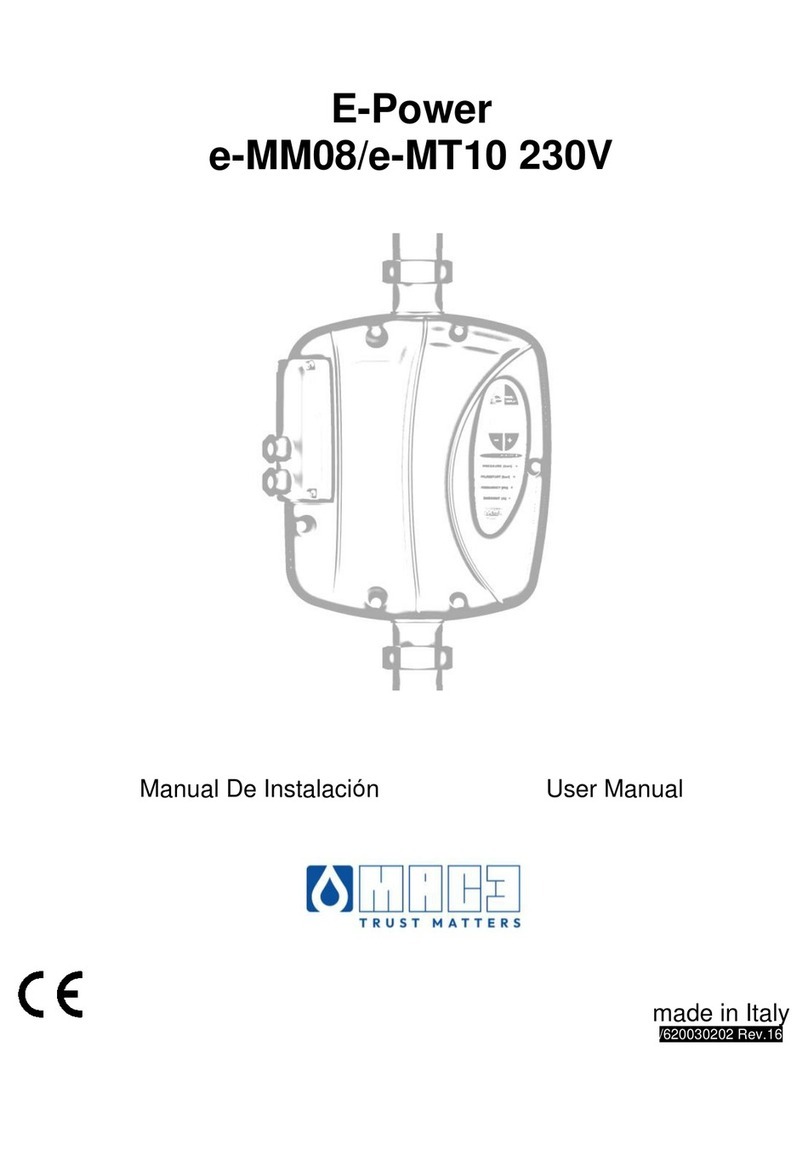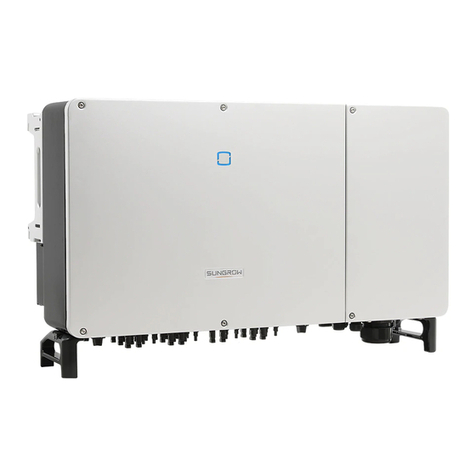Chint Power CPS PSW1.5M-1500V User manual

CPS PSW1.5/3M-1500V
Inverter Container
User Manual

1
Contents
1 About This Manual............................................................................................. 5
1.1 Foreword..................................................................................................................................5
1.2 Validity......................................................................................................................................5
1.3 Content.....................................................................................................................................5
1.4 Target Group ............................................................................................................................5
1.5 Symbols Explanation ................................................................................................................6
1.6 How to Use this Manual...........................................................................................................6
1.7 Terminology..............................................................................................................................7
2 Safety Instructions ............................................................................................. 8
2.1 Intended Usage ...........................................................................................................................8
2.2 Important Safety Instructions .....................................................................................................8
2.2.1 General Safety Rules ................................................................................................................8
2.2.2 Manual Storage ........................................................................................................................9
2.2.3 Emergency Escape Route .........................................................................................................9
2.2.4 PV Arrays Hazards ....................................................................................................................9
2.2.5 Ground Fault Protection.........................................................................................................10
2.2.6 Live Line Measurement..........................................................................................................10
2.2.7 Measuring Instrument ...........................................................................................................10
2.2.8 Volt-free Operations...............................................................................................................10
2.2.9 ESD Protection........................................................................................................................10
2.2.10 LCD Parameter Setting .........................................................................................................11
2.2.11 Sand and Moisture Protection .............................................................................................11
2.2.12 Symbols on the Device Body................................................................................................11
2.2.13 Safety Warning Signs............................................................................................................11
2.2.14 Daily Operation and Maintenance .......................................................................................11
2.2.15 Disposal of Waste.................................................................................................................12
2.2.16 Manual Description..............................................................................................................12
3 Product Description...........................................................................................13
3.1 Container Design.......................................................................................................................13
3.1.1 Container Views .....................................................................................................................13
3.1.2 Mechanical Parameter ...........................................................................................................14
3.1.3 Internal Components .............................................................................................................14
3.1.4 Ventilation Design ..................................................................................................................15
3.1.5 Cable Entry Design .................................................................................................................15
3.1.6 Flashings Design .....................................................................................................................16

2
3.2 Inverter Design..........................................................................................................................17
3.2.1 Appearance of the Inverters ..................................................................................................17
3.2.2 Electrical Connections Area....................................................................................................17
3.3 Power Distribution Box Design..................................................................................................17
4 Delivery ............................................................................................................19
4.1 Scope of Delivery.......................................................................................................................19
4.2 Identifying the Container ..........................................................................................................19
4.3 Checking for Transport Damages ..............................................................................................19
5 Mechanical Installation .....................................................................................21
5.1 Transport ...................................................................................................................................21
5.2 Hoisting the Container ..............................................................................................................21
5.2.1 Safety Precautions..................................................................................................................21
5.2.2 Hoisting ..................................................................................................................................22
5.2.3 Fastening of Connectors.........................................................................................................23
5.3 Transport with Forklift...............................................................................................................23
5.4 Foundation ................................................................................................................................24
5.4.1 Selection of Installation Site...................................................................................................24
5.4.2 Foundation Requirements......................................................................................................25
5.4.3 Recommended foundation construction method..................................................................25
5.4.4 Other Precautions ..................................................................................................................28
5.5 Fixing the Container ..................................................................................................................28
5.6 Flashings Installation .................................................................................................................28
5.6.1 Brief Introduction...................................................................................................................28
5.6.2 Installation Steps....................................................................................................................29
6 Electrical Installation .........................................................................................30
6.1 Safety Instructions.....................................................................................................................30
6.2 Parts for Cabling ........................................................................................................................31
6.2.1 Copper Wire Connection........................................................................................................32
6.2.2 Aluminum Wire Connection...................................................................................................32
6.3 Preparation before Electrical Connections................................................................................33
6.3.1 Installation Tools ....................................................................................................................33
6.3.2 Opening the Inverter Front Door ...........................................................................................33
6.3.3 Removal of the Protective Grid..............................................................................................34
6.3.4 Opening the Cable Entries......................................................................................................34
6.3.5 Checking the Cables ...............................................................................................................34
6.3.6 During Connection .................................................................................................................34
6.4 Container Circuit Diagram and Cable Connection.....................................................................35

3
6.4.1 Circuit Diagram.......................................................................................................................35
6.4.2 Cable Specifications ...............................................................................................................36
6.5 Ground Connection...................................................................................................................36
6.6 AC Connection...........................................................................................................................37
6.6.1 Safety Notices.........................................................................................................................37
6.6.2 AC Cable Connection..............................................................................................................38
6.7 DC Connection...........................................................................................................................39
6.7.1 Checking before Connection ..................................................................................................39
6.7.2 DC Cable Connection..............................................................................................................40
6.8 Auxiliary power and dry contact connection ............................................................................41
6.9 Communication connection ......................................................................................................42
6.10 External 1phase or 3-phase Container Power Supply (Optional)............................................43
6.11 Finishing Electrical Connection ...............................................................................................43
7 Commissioning..................................................................................................44
7.1 Safety Instructions.....................................................................................................................44
7.2 Requirements of Commissioning ..............................................................................................44
7.3 Checking before Commissioning ...............................................................................................45
7.3.1 Checking the Cable Connection .............................................................................................45
7.3.2 Checking the Inverter.............................................................................................................45
7.3.3 Checking PV Array ..................................................................................................................45
7.3.4 Checking Grid Voltage ............................................................................................................46
7.4 Preparation before Starting.......................................................................................................46
7.5 Starting the Device....................................................................................................................46
7.6 LCD Parameter Setting ..............................................................................................................47
7.7 Completing Commissioning ......................................................................................................47
8 Operation .........................................................................................................48
8.1 Check before start-up................................................................................................................48
8.2 Start-up procedure....................................................................................................................48
8.3 Operation mode........................................................................................................................49
8.4 Shutdown ..................................................................................................................................49
8.5 Grid-tied power generation ......................................................................................................51
8.6 Fault shutdown..........................................................................................................................51
9 User Interface ...................................................................................................53
9.1 Description of LCD panel...........................................................................................................53
9.2 Status indication........................................................................................................................53
9.3 Interface and menu functions...................................................................................................53
9.3.1 Home page .............................................................................................................................54

4
9.3.2 Operation information ...........................................................................................................55
9.3.3 Present fault alarm.................................................................................................................55
9.3.4 History ....................................................................................................................................56
9.3.5 Inverter parameter.................................................................................................................56
9.3.6 System parameter ..................................................................................................................61
9.3.7 Version information ...............................................................................................................63
9.3.8 Power dispatching..................................................................................................................64
10 Container Functions ........................................................................................65
10.1 Intelligent Temperature & Humidity Control Technology .......................................................65
10.2 Firefighting ..............................................................................................................................65
10.2.1 General Introduction............................................................................................................65
10.2.2 Smoke Detector....................................................................................................................65
10.2.3 Fire Emergency Lights ..........................................................................................................65
10.2.4 Fire Extinguisher (Optional) .................................................................................................65
11 Troubleshooting ..............................................................................................66
11.1 Safety Instructions...................................................................................................................66
11.2 Fault Checking .........................................................................................................................66
11.3 Fault and Troubleshooting on the LCD screen ........................................................................67
12 Routine Maintenance ......................................................................................75
12.1 Safety Instructions...................................................................................................................75
12.1.1 Safety Instructions................................................................................................................75
12.1.2 Five Safety Rules...................................................................................................................75
12.2 Maintenance ...........................................................................................................................76
12.2.1 Introduction .........................................................................................................................76
12.2.2 Maintenance Interval...........................................................................................................76
12.2.3 Container filter checking and cleaning.................................................................................79
12.2.4 Inverter air filter cleaning and replacement ........................................................................79
12.2.5 Replacement of the electrical components .........................................................................80
12.2.6 Spraying Protective Paint .....................................................................................................80
13 Appendix ........................................................................................................81
13.1 Container System Parameter ..................................................................................................81
13.2 Exclusion of Liability ................................................................................................................82
13.3 About Us..................................................................................................................................82
13.4 Contact Information................................................................................................................83

5
1 About This Manual
1.1 Foreword
Thank you for purchasing the Inverter Container from Shanghai CHINT Power Systems Co., Ltd. We hope that the
device will meet your satisfaction. Your commands and feedbacks on the performance and function of the device
are very important for our further improvement.
1.2 Validity
This manual is applicable to the Inverter Container product of CPS PSW1.5/3M-1500V (hereinafter it will be
referred to as "container" unless otherwise specified).
1.3 Content
This manual contains the following information:
Content
Description
Safety
instruction
Safety instructions concerning the installation, operation, maintenance and troubleshooting
of the container
Product
Description
The appearance and internal components of the container
Delivery
Delivery and inspection after receiving the container
Installation
Mechanical transport, installation, and electrical connection of the container
commissioning
Safety notices and commissioning process when the container is powered on for the first
time
Operation
Steps to start and stop the container internal devices during normal operation
User interface
Function and use of the container HMI
Functions
Descriptions of the container main functions
Troubleshooting
Simple troubleshooting of the container
Daily operation
Instructions and guide of the daily operation of the container
1.4 Target Group
This manual is for technical personnel who are responsible for the transport, installation and other
operations of the container. Only qualified personnel can perform the installation, maintenance
and troubleshooting of the container. Unauthorized persons should not perform any operation to
the container and should be away from the container to avoid potential hazards. Qualified
personnel are:
Equipped with certain electrical, electrical wiring and mechanical knowledge and familiar
with electrical and mechanical principle diagram;
Familiar with the construction and working principle of the PV grid-connected power
generation system; familiar with the construction and working principle of the inverter
upstream and downstream equipment
Trained specifically for electrical device installation and commissioning. Equipped with the
ability to cope with the dangerous and emergency situations during installation and
commissioning

6
Familiar with the country/regional standards and specifications
Familiar with this manual
1.5 Symbols Explanation
This manual contains important safety and operational instructions that must be accurately
understood and respected during the installation and maintenance of the equipment.
To ensure the optimum use of this manual, note the following explanations of the symbols used.
DANGER:
DANGER indicates a hazard with a high level of risk which, if not avoided, will result
in death or serious injury.
WARNING:
WARNING indicates a hazard with a medium level of risk which, if not avoided, could
result in death or serious injury.
CAUTION :
CAUTION indicates a hazard with a low level of risk which, if not avoided, could
result in minor or moderate injury.
NOTICE:
NOTICE indicates a situation which, if not avoided, could result in equipment or
property damage.
NOTE:
NOTE indicates additional information, emphasized contents or tips to help you solve
problems or save time.
The symbols below may be pasted on the electrical parts of the container. Make sure to read the
following symbols and fully understand them before installing the equipment.
Symbol
Explanation
Lethal voltage inside! Do not touch!
Hot surface! Do not touch the hot surface of the device.
Energy hazard:
Caution, risk of electric shock, energy storage timed
Discharge.
Protective earth. Earthing securely to ensure personal safety.
1.6 How to Use this Manual
Read this manual and other related documents before transporting and installing the container.
Documents must be stored at hand and available at all times.
All rights reserved including the pictures, markings and symbols used. Any reproduction or
disclosure, even partially, of the contents of this manual is strictly forbidden without prior written
authorization of CPS.

7
The contents of the manual will be periodically updated or revised due to the product development.
It is probably that there are changes of manual in the subsequent inverter edition. The latest
manual can be acquired via visiting the web site at www.chintpower.com.
1.7 Terminology
In this manual, the inverter container will be referred to as “container” and the central PV
grid-connected inverter will be referred to as “inverter” unless otherwise specified.

8
2 Safety Instructions
2.1 Intended Usage
The container, R & D and manufactured by CPS, is mainly applied to large-and-medium PV
power systems. By adopting outdoor standard container design, the container integrates the PV
inverters, monitoring units, power distribution units, firefighting system, lighting devices, and
security & protection system to meet the modular design and quick installation requirement of the
large-and-medium PV power container as well as ensure the long-time, reliable and safe
grid-connected power generation.
The output of the container can match MV grid with different grid level via different external
transformer. The PV power generation system with container is shown in the following figure.
A B C D E
Figure 2-1 Application of Container to the PV Power System
No.
Name
A
PVArray
B
PVArray Combiner Box
C
Container
D
Transformer
E
Utility Grid
WARNING:
Installation of the container not in compliance with the description in this manual or
installation or modification of the device without authorization from CPS may lead to
personal injuries or device damages and may void pertinent warranty claims from CPS.
2.2 Important Safety Instructions
Read the safety instructions carefully before installing the container. Refer to corresponding
manuals for the safety instructions on the internal devices.
2.2.1 General Safety Rules
DANGER:
Touching of the terminals or contactors connected to the grid may lead to electric shock
hazards!
Do not touch the terminals or conductors connected to the grid.
Respect all safety instructions on the grid connection.

9
DANGER:
Lethal voltages are present inside the device!
Pay attention and follow the warning signs on the device.
Respect all safety instructions in this manual and other pertinent documents.
DANGER:
Electric shock or fire may occur due to the device damage or system fault.
Visual inspect for device damages or other hazards.
Check if the external devices and circuit connections are safe.
Only operate the device when it is safe to do so.
WARNING:
All installations and operations on the container must be in full accordance to the
national and local regulations and standards.
2.2.2 Manual Storage
Product manuals are indispensable part of the product. Very important information about the
transport, installation, maintenance and troubleshooting of the container is included in this manual.
All the descriptions in this manual, especially those safety-related items, must be complied with.
Please read all the instructions thoroughly prior to any operation work on the container.
Transport, install, maintain and service the container by strictly following the descriptions in
this manual. Device damage, personal injury or property loss may follow if otherwise.
This manual and relevant documents should be available for relevant persons at all times.
2.2.3 Emergency Escape Route
The emergency escape route is critical during an emergency situation.
Keep the escape route clear and unblocked at all times.
Never block or lock the emergency escape route in any form.
2.2.4 PV Arrays Hazards
DANGER:
DC high voltage! Electric shock hazards!
When exposed to sunlight, PV array will produce voltage, which is very high in
large-scale power container.
Death resulting from burning and electric shock upon touching the PV array.
During installation, maintenance and troubleshooting of the device ensure:
Container is disconnected from the PV array.
Necessary warning signs are in place to prevent accidental reconnection.

10
2.2.5 Ground Fault Protection
DANGER:
If a ground fault occurs to the PV system, some parts that were voltage-free before may
contain lethal voltage .Accidental touch may cause serious damage. Make sure there is
no system ground fault before operation and take proper protection measures.
2.2.6 Live Line Measurement
DANGER:
High voltage is present inside the device. Death resulting from burning and electric
shock upon touching the live components of the container. During live line
measurement,
Use suitable protective equipment ,for example dielectric gloves, and
Accompany by other persons.
2.2.7 Measuring Instrument
Instrument for measurement of the electrical parameters should meet the requirements listed
below:
WARNING:
Instrument for measurement of the electrical parameters should be high quality
instrument with sufficient measuring range.
Make sure the connection and use of the instrument are correct to avoid arc and
other dangerous situations.
Use suitable protective equipment, for example dielectric gloves if live line
measurement is required.
2.2.8 Volt-free Operations
Perform operations on the container only when all devices inside the container, esp. the inverter
are completely voltage free.
Avoid any accidental re-connections.
Verify that no voltage or current is present with appropriate testing devices.
Ground and short-circuit whenever necessary.
Cover possible live parts to avoid accidental contact.
Ensure sufficient escape room.
Wait at least 5 minutes after the inverter stops completely to operate the inverter.
2.2.9 ESD Protection
WARNING:
Devices may be damaged irreversibly by electrostatic discharge (ESD).
Avoid unnecessary touching of the PCB.
Observe all the ESD-related safety instructions. Take proper personal protective
equipment (PPE), like wear wrist strap.

11
2.2.10 LCD Parameter Setting
Certain LCD settable parameters are closely related to the container and internal devices operation,
therefore these parameters can only be set after reliable evaluation of the system.
WARNING:
Improper parameter setting may affect the functionality of the device.
Only qualified personnel can set the parameters.
2.2.11 Sand and Moisture Protection
Do not open the container door in sand storm, thunderstorm, strong wind or hail days or when the
ambient humidity is above 95%.
2.2.12 Symbols on the Device Body
Symbols on the devices body contain important information on the safe operation of the container
and its internal devices. Do not tear or damage them!
NOTICE:
Do not damage or tear the symbols.
All symbols on the device body must be clearly visible.
Replace the symbols once any damaged or unclearness is detected.
2.2.13 Safety Warning Signs
During transport, installation, maintenance and troubleshooting of the container, keep non-related
persons away.
Post warning signs near the container upstream and downstream switches to prevent
accidental connection.
Place necessary warning signs or barriers near the on-site operation areas.
2.2.14 Daily Operation and Maintenance
Make sure the container doors are closed and locked during daily operation to prevent internal
devices from damages by rain or rodents.
Routine check and maintain the container and internal devices to ensure long and reliable
operation of the container.
WARNING:
Make proper insulation protection during live line operation. At least two persons are
required until the operation is done.
Proper field rescue facilities are necessary since the location of most PV container is
far away from the urban areas.
Take the followings into consideration during daily operation and maintenance:
Nameplates are pasted on the container internal devices, like the inverter, power distribution
cabinet and etc. They contain very important parameter information about the devices.
Protect the nameplates during all operations.

12
Heating components may exist inside the container. When the device stops, the heating
components may still be hot. Wear proper glove when working on them.
The inverters and cooling fans inside the container may emit acoustic noise during operation.
Wear noise abatement earplug when entering into the container.
Maintain the cooling fans inside the container and inside the inverter only when the fans stop
rotating.
Wear proper PPE, such safety glasses, safety footwear and safety gloves if necessary.
All necessary auxiliary measures are advisable to ensure the personal and device safety
2.2.15 Disposal of Waste
When the container or internal devices is end of life, it cannot be disposed of together with
household wastes. Some components inside can be recycling and some components can cause
environment pollution.
Please contact the local authorized collection point.
2.2.16 Manual Description
NOTE:
For user’s convenience, there are a large number of pictures in this manual. These
pictures are indicative only. For details about the device, please refer to the actual
product you receive.
NOTE:
Keep this manual at a convenience place near the device for future reference during
installation, operation, maintenance and troubleshooting of the device.
NOTE:
All the descriptions in this manual are for the standard container. Please inform us in the
purchase order if you have specific requirements. The actual product you receive may
differ.
This manual may not cover all possible situations. Should a specific problem occur that
is not explained in this manual, please contact CPS.

13
3 Product Description
3.1 Container Design
3.1.1 Container Views
View
Description
Danger
Front view
Front of the container; a single-door is
equipped; the container external grounding
point is located on the lower left side.
Back view
Back of the container; the container external
grounding point is located on the lower left
side.
Danger Danger
Left view
Left of the container; an equipment-door is
equipped.

14
1MW PV Power Station
ShanghaiChint Power Systems Co.,Ltd
Danger Danger
Right view
Right of the container; an equipment-door is
equipped; the nameplate of the container is
located on the lower left side.
3.1.2 Mechanical Parameter
External dimensions (without the flashings) are shown in figure below.
Left view Front view
Danger
Danger Danger
Figure 3-1 Appearance and dimensions of the container
Width
Height
Depth
Weight
2991mm
2591mm
2438mm
Approx. 5000kg (with
internal devices)
3.1.3 Internal Components
Figure below shows the top view of the major electrical components inside the container:
Container front view
Figure 3-2 Container internal devices layout

15
Devices in the above figure are:
Item
Device
Description
#1
Inverter 1
The two inverters are of the same model: CPS SCH1500K;
Hereinafter the two inverters will be referred to as #1, #2
respectively (for 1.5MW container, only one inverter inside)
#2
Inverter 2
A
Manhole cover
The manhole cover for routine maintenance use.
B
Power distribution box
The box integrates AC power distribution function and
communication function.
NOTE;
Please confirm the configure of the power distribution box according to the project
requirement.
Please refer to the actual filed configuration.
3.1.4 Ventilation Design
The air inlets (“Air-in” in the following figure) are located around of the container to satisfy the
volume requirements of air supply.
Hot air is exhausted via air ducts “Air-out” in the following figure.
Inverters are the main heating devices inside the container. The ventilation system is designed as
cool air coming inside from the bottom of the container and hot air getting outside the container
from the top of the container. Hot air emitted by the inverters, and hot air of the container internal
cooling fans is extracted out of the container through the air ducts on top of the container (“Air-out”
in the following figure).
Danger
Danger Danger
1MWPVP owerS tation
Danger Danger
Left view Front view Right view Back view
Figure 3-3 Air inlets and outlets of the container
3.1.5 Cable Entry Design
For convenient cable connection in the field, all cables among the container internal devices are
connected before delivery.
AC cables for connection of the container and the external devices are routed through the bottom
of the container. All cables come into or out of the container should be protected properly, for
example, cable pipe to prevent damage by rodents. After cable connection, all cable entries should
be sealed by fireproof mud or other appropriate materials.
The container bottom cable entries are shown below.

16
Top view of container pedestal (Container front)
Figure 3-4 Cable entries of the container
Function of each opening is shown below:
Item
Name
Description
Hole-1
DC cable inlet
DC cables connect to the inverter DC side through this
hole
Hole-2
AC cable outlet
AC cables connect to the downstream transformer
through this hole
Hole-3
External power supply cable
inlet
External power supply cables go inside the container
through this hole
Hole-4
Communication cable inlet
Communication cables go inside the container through
this hole
3.1.6 Flashings Design
Flashings should be installed to all the 5 air outlets on the left, back and right of the container.
Under the flashings are anti-dust filters.
The design and installation of the flashings can greatly reduce the effect of rain and wind and sand
to the ventilation ducts.
Remove the cover plates and install the corresponding flashings after the container has been
secured to the ground. The position of 5 cover plates is shown in the following figure by (1) –(5).
Danger Danger
1MW PVPower Station
ShanghaiChint PowerSystemsCo.,Ltd
Danger Danger
Left view Back view Right view
Figure 3-5 Position of the cover plates

17
3.2 Inverter Design
3.2.1 Appearance of the Inverters
Two (or One) CPS SCH1500K inverters are inside of each container. Inverters are core devices
inside the container that can convert the DC power to AC power. The appearance of the inverter is
shown below.
Figure 3-6 Appearance of the inverter
3.2.2 Electrical Connections Area
All the electrical connection areas are in the lower part of the inverter front side with specific
markings.
Please observe the connection markings to perform the electrical connection work.
AB
C
Figure 3-7 Electrical connections area of the inverter
Item
Descriptions
Markings on the Device
A
DC connection areas
DC+, DC- (Inverter supports up to 12 DC inputs.)
B
AC connection area
L1, L2, L3
C
Ground terminal
3.3 Power Distribution Box Design
The power distribution box integrates the function of power distribution.
The power distribution function integrated, can supply power to the lighting device, security
devices inside the container.
The power distribution box can be power supplied from the AC side of the inverter or connected
to external 1-phase or 3-pahse container power supply. The two can work independently or switch

18
as main and backup power supply to increase the reliability of power supply.
The distribution box integrated communication function, the inverters signals and temperature &
humidity controller signals can be output from the distribution box to the outside.
NOTE:
Please confirm the configure of the power distribution box according to the project
requirement.
Please refer to the actual filed configuration.

19
4 Delivery
4.1 Scope of Delivery
Scope of delivery for the container is shown in the following table:
No.
Device
Quantity
Note
1
PV grid-connected
inverter
2(1)
All inverter related accessories, 2(1) inverters of the
same model
2
Power distribution box
1
Including all accessories related to the power
distribution box
3
Container and other
accessories
1 set
Including flashings, firefighting devices, fans, lighting
devices and ventilation ducts, etc.
4.2 Identifying the Container
Identify the container from the nameplate located on the lower left side of container right side
(identified by “Nameplate” in figure below). The nameplate contains the following information:
container model, major technical parameters, marks of certification institutes, origins, and serial
number which are available and recognized by CPS.
1MW PV Power Station
ShanghaiChint Power SystemsCo.,Ltd
Danger Danger
xx MW PV Power Station
Model Name:
Max.DC Input Power:
SHANGHAI CHINT POWER SYSTEMS CO., LTD.
Rated AC Output Power:
Max.DC Input Voltage:
Max.DC Input Current:
MPPT Voltage Range:
Protection Class:
Max. AC Output Current:
Rated Output Frequency:
Max.Efficiency:
Protection Degree:
Dimension:
Weight:
Rated AC Output Voltage:
Euro Efficiency:
Made in China
Serial Number:
Manufacture date:
Right view
Figure 4-1 Location of the container nameplate
WARNING:
Very important technical parameters and container related parameters are contained in
the nameplate.
Protect the nameplate at all times!
4.3 Checking for Transport Damages
The container has been strictly inspected and tested before delivery. Despite robust packaging, the
container or inside devices may be damaged during transport. Therefore, once you receive the
container, a detailed inspection is necessary.
If any damage is detected, contact the shipping company or CPS immediately. A relevant photo is
This manual suits for next models
1
Table of contents
Other Chint Power Inverter manuals
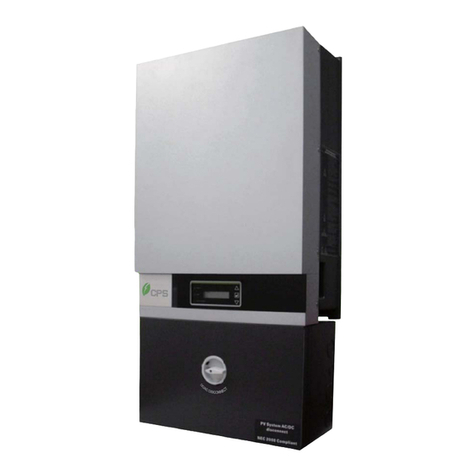
Chint Power
Chint Power CPS SCE4 User manual
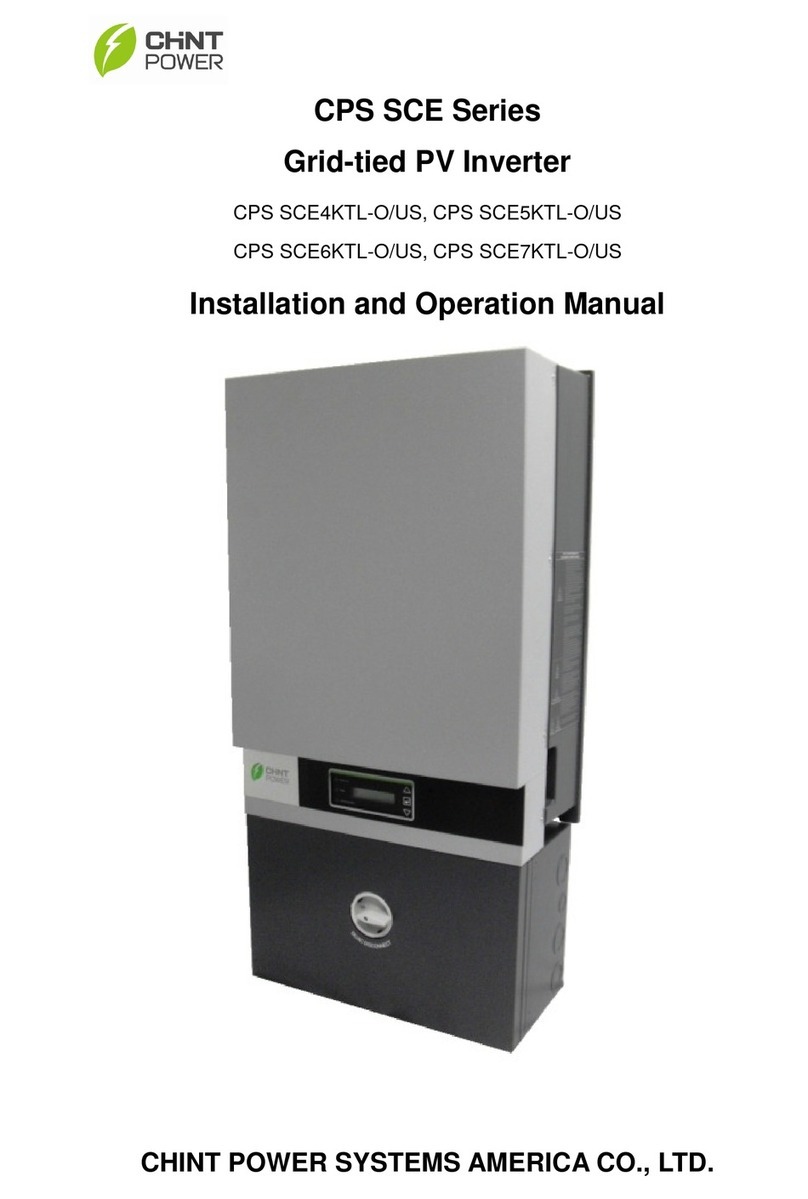
Chint Power
Chint Power CPS SCE4KTL-O/US User manual
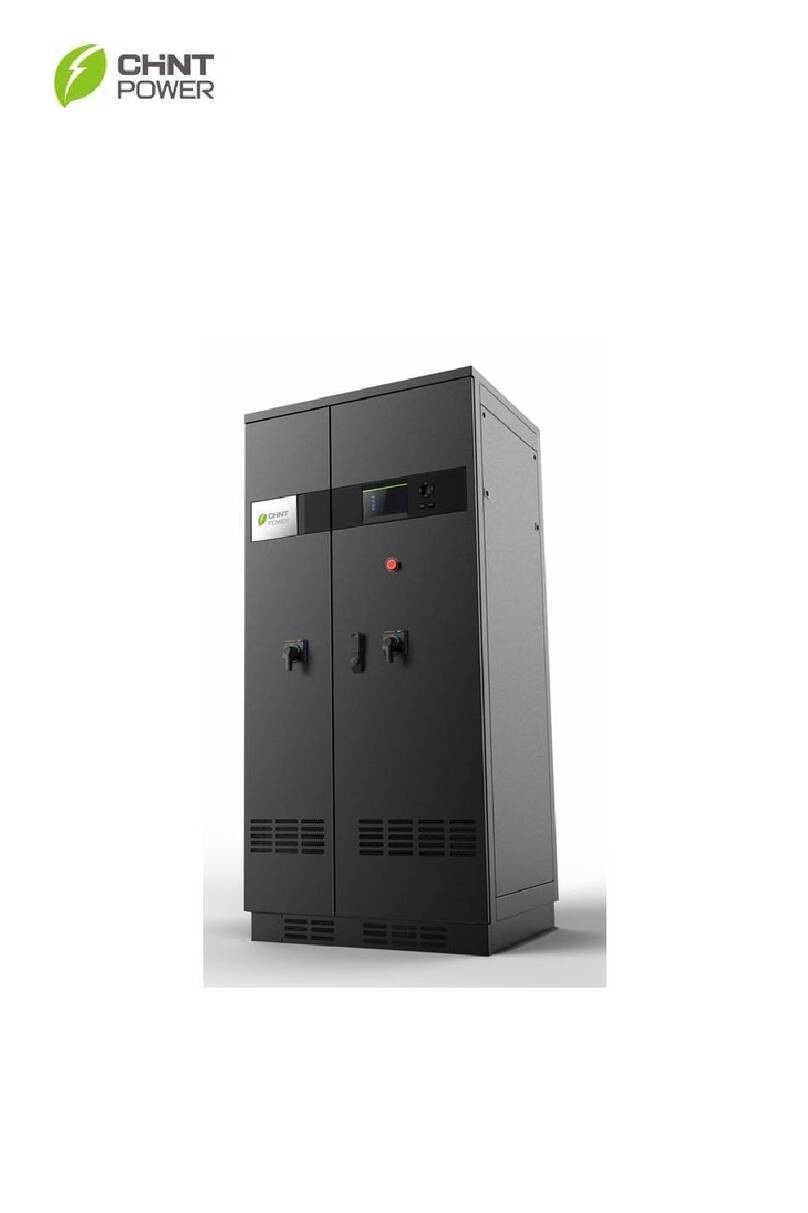
Chint Power
Chint Power CPS Series User manual
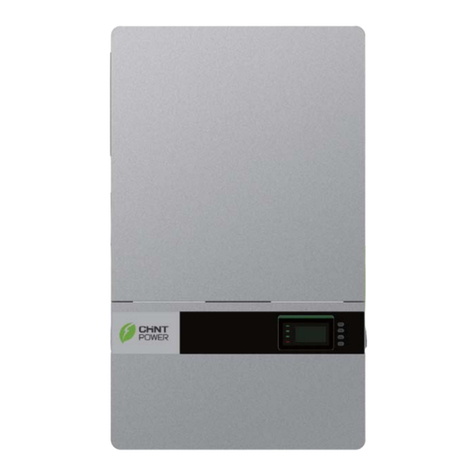
Chint Power
Chint Power CPS SCA25KTL-DO User manual

Chint Power
Chint Power CPS SCH Series User manual
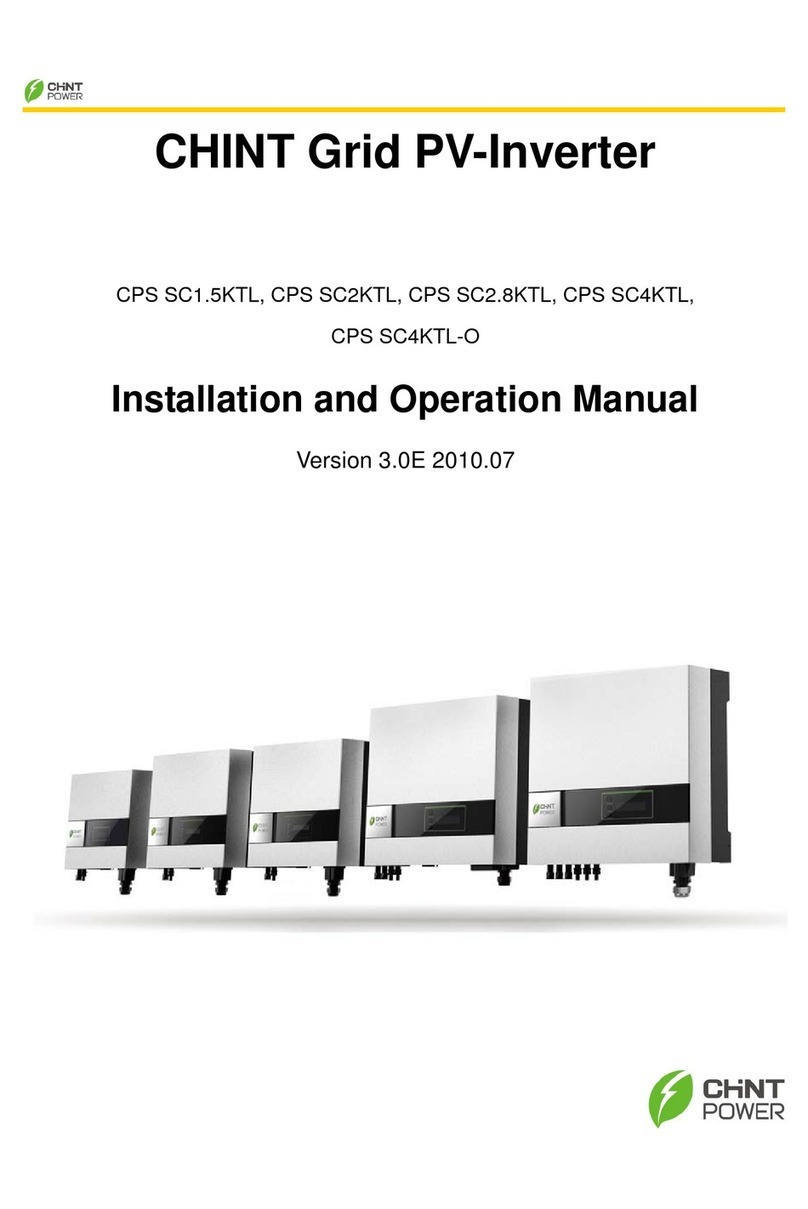
Chint Power
Chint Power CPS SC2.8KTL User manual

Chint Power
Chint Power CPS SCA50KTL-DO/US-480 User manual
